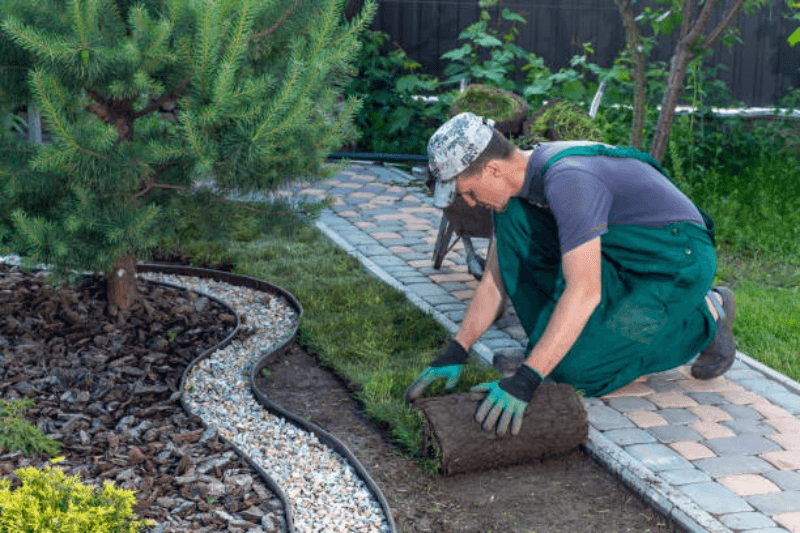
Whether you are a homeowner looking to elevate your property’s aesthetic appeal or a business seeking to create a welcoming environment, landscaping plays a crucial role in achieving these goals. In Sellersville, a charming borough in Pennsylvania, the art of landscaping combines creativity with an understanding of local flora, climate, and soil conditions. The unique blend of these factors enables you to create outdoor spaces that are not only beautiful but also functional and sustainable.
When considering Landscaping Sellersville, understanding the local environment becomes essential. The region experiences a temperate climate, characterized by four distinct seasons. This influences the types of plants that thrive throughout the year. For example, the warm summers and cold winters allow for a diverse array of plants, including perennials that bloom in spring and fall, as well as evergreens that provide year-round interest. Moreover, native plants can significantly enhance your landscaping project as they are better adapted to local weather conditions and can attract beneficial wildlife, such as pollinators and birds.
Creating a landscaping plan involves several steps, starting with an assessment of the existing outdoor space. Taking the time to analyze the area helps identify opportunities and challenges. Factors such as sunlight exposure, soil quality, and drainage are vital considerations. Mapping out these elements allows for informed decisions regarding the selection of plants, hardscaping materials, and other landscape features. Following this assessment, you can develop a design that incorporates various elements such as flower beds, shrubs, trees, walkways, and patios, providing visual interest and functional outdoor living spaces.
Moreover, hardscaping is an essential component of any landscaping project. This involves the use of non-plant elements, such as stones, bricks, and concrete, to create pathways, retaining walls, and decorative features. Effective hardscaping can enhance the overall design and functionality of outdoor spaces. When planning hardscape elements, consider both aesthetics and functionality. For instance, a well-placed stone pathway can lead visitors through a lush garden while also managing water runoff and soil erosion.
Plant selection plays a pivotal role in the success of landscaping in Sellersville. Ideally, a balanced mix of trees, shrubs, and flowers creates an engaging landscape that evolves throughout the seasons. Additionally, incorporating a variety of plant heights, colors, and textures offers visual appeal. For example, combining low-growing perennials with taller grasses and flowering shrubs adds depth and interest. Ensure that plants selected are appropriate for the specific conditions of the site, taking into account sunlight, soil moisture, and drainage. This approach promotes healthy growth and reduces maintenance requirements.
Incorporating sustainable practices into landscaping projects can significantly enhance environmental responsibility while creating beautiful spaces. Sustainable landscaping involves utilizing native plants, managing water efficiently, and reducing the need for chemical fertilizers and pesticides. Rain gardens, for instance, are an excellent way to capture runoff and create habitats for local wildlife. Using mulch to retain soil moisture and control weeds further contributes to sustainability. By focusing on eco-friendly practices, you contribute positively to the local ecosystem and create an outdoor space that thrives with minimal intervention.
Maintenance is an ongoing requirement for any landscape, especially in a climate like that of Sellersville, where seasonal changes can dramatically affect plant health. Developing a maintenance plan that includes regular watering, pruning, and seasonal clean-up can keep your landscape looking its best. Furthermore, seasonal tasks such as mulching in the spring, fertilizing in the fall, and monitoring for pests contribute to the longevity and vitality of the landscape. Investing time in maintenance ensures that the initial vision for your outdoor space remains intact, adapting to changes over the years.
Landscaping also extends beyond aesthetics and functionality; it influences how outdoor spaces are used. Consider how different features can create areas for social interaction, relaxation, or recreation. For example, a well-placed patio or deck serves as a gathering spot for family and friends, while pathways through a garden can encourage exploration and connection with nature. Designing outdoor spaces with intentionality can significantly enhance the quality of outdoor experiences, offering spaces that cater to various activities and preferences.
Finally, embracing the local community’s aesthetic and cultural values plays a vital role in the success of landscaping projects in Sellersville. The history and character of the borough can inspire design choices, leading to landscapes that resonate with the surrounding environment. Engaging with local resources, such as native plant nurseries and landscape design professionals, can provide insight into the best practices for creating landscapes that reflect Sellersville’s unique identity.
In conclusion, landscaping in Sellersville encompasses a harmonious blend of creativity, environmental understanding, and community engagement. Transforming outdoor spaces requires careful planning, a commitment to sustainability, and an appreciation for the local climate and flora. By considering these factors, you can create landscapes that not only beautify properties but also enhance the quality of life for those who inhabit them. As the local community flourishes, so too will the landscapes that reflect and celebrate its rich heritage, creating harmonious outdoor spaces for generations to enjoy.